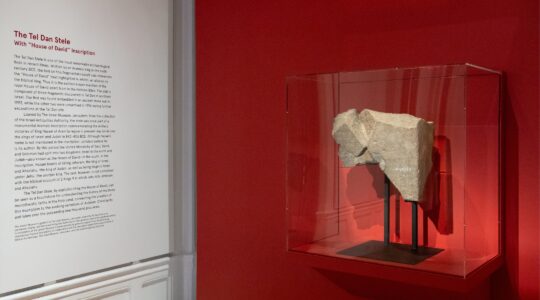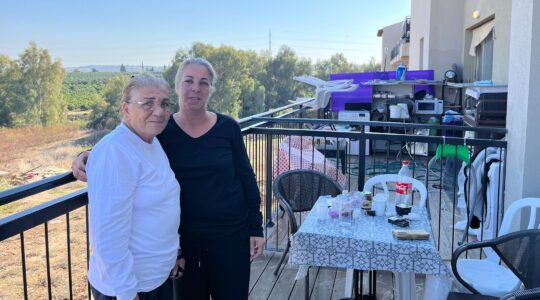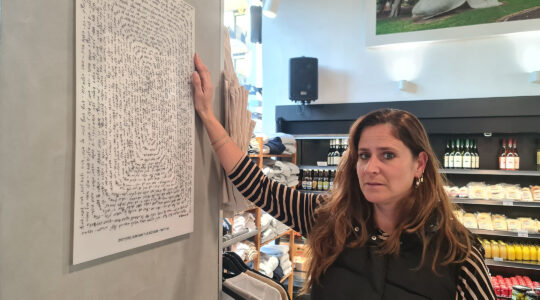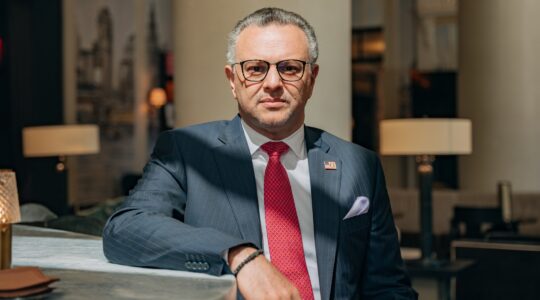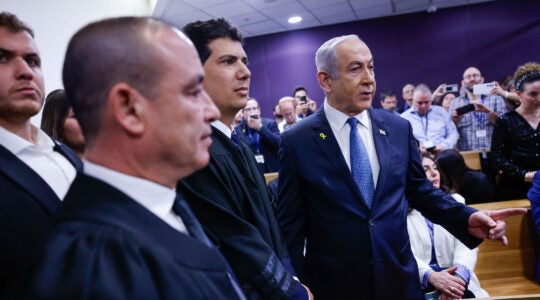UMM AL-FAHM, Israel (JTA) — It’s time for noon prayers in this Israeli Arab city, and a jumble of sneakers piles up outside the doors of a mosque on the top floor of a private high school for the sciences.
Inside, the boys, led in prayer by a math teacher, stand in two rows on a soft green-and-beige carpet and then kneel in unison. The $5.8 million tab to construct the high school, considered one of the top Arab schools in Israel with its state-of-the art physics and chemistry labs, was picked up by the Islamic Movement.
Such support — helping fund community needs not being met by the Israeli government — is one way the movement is gaining power and influence among Israel’s 1.2 million Arabs.
“This vacuum has opened the door for the Islamic Movement to get in and provide alternative services,” said Yousef Jabareen, a resident of Umm al-Fahm and director of Dirasat, a nonprofit that advocates for socioeconomic and political equality for Israel’s Arab citizens.
The influence of the movement — particularly its northern branch, which preaches adherence to a devout form of Islam and a code of social isolation from Israel at large — can be seen in the shift toward increased religious observance among some of Israel’s Arab citizens, the majority of whom are Muslim.
Critics say the movement’s more extreme elements preach a form of nationalism that is actively anti-Israeli and is radicalizing Israel’s Arab citizens. Its social service tactics have been compared to the work of Hamas, which similarly built a base of support among ordinary Palestinians by providing social services not offered by the Fatah-dominated Palestinian Authority.
With its power base in Umm al-Fahm, one of Israel’s largest Arab towns, the Islamic Movement in Israel is drawing support with the message that pride in Islamic roots can overcome the feelings of second-class citizenship to which Arab citizens often feel relegated in the Jewish state.
The movement is divided into two branches: the more radical northern branch, which eschews the Israeli political process and calls on followers to abstain from voting in national Israeli elections, and the more moderate southern branch, which is represented in Israel’s Knesset.
Sheik Ibrahim Sansur, a Knesset member who leads the movement’s southern branch, told JTA that the Islamic Movement is united by the goal “to crystallize the religious and national identity of the Arab minority inside Israel.”
Representatives of the northern branch refused JTA’s requests for interviews. But Sheik Ra’ad Salah, a key leader of the branch and the former mayor of Umm al-Fahm, made headlines during the Jewish High Holidays six weeks ago when he called on supporters to “liberate” the Al-Aksa mosque in Jerusalem “with blood and fire,” touching off days of clashes between police and Arab rioters.
Umm al-Fahm is a visible example of the movement’s success. Its hilly landscape is dotted with the rounded domes of mosques built by the movement, as well as dozens of other movement-funded projects, including women’s education centers, a college for the study of Islamic law and Arabic language, and even a hospital under construction. A growing number — perhaps a majority — of women and girls wear headscarves, and men sport thick beards.
The Islamic Movement started to take off here following the 1967 Six-Day War. It was then that Israel’s Arab citizens could re-establish ties with their Palestinian brethren in the West Bank and Gaza Strip that had been cut off since the 1948 war of Israeli independence. Many Arab Israelis attended Islamic colleges in the West Bank and Gaza, sparking a return to devout observance for some inside Israel. The movement was strengthened by the example of the Islamic revolution in Iran in 1979.
Salah has become the face of the movement’s more controversial side. A product of the post-1967 Islamic awakening in Israel, Salah returned from his religious studies in Hebron and Nablus as a leader of the movement. He has been accused of raising millions of dollars for Hamas — a charge he denies.
Yitzhak Reiter, a professor of political science at the Hebrew University and Ashkelon Academic College, says Salah’s broader goal is to connect Israel’s Muslims to the larger Islamic world and make Jerusalem the future seat of an Islamic caliphate.
Salah preaches that Israel’s archeological activities near the Temple Mount are part of a secret Jewish plan to destabilize the Al-Aksa Mosque, provoke its collapse and pave the way for the construction of the Jewish Holy Temple. Such charges are dismissed as fantasy and incitement by Israeli authorities.
Nohad Ali, a sociologist at Haifa University and an expert on the Islamic Movement, says Salah and his followers nevertheless believe such conspiracies to be true. The fears have been heightened by the agitation of some Israelis to visit the Temple Mount and messianic talk by a few radicals of rebuilding the Holy Temple, Ali said.
Though it’s not in the interests of the movement to rush headlong into confrontation with Israel, Ali said, the movement continues to keep the issue a central one in the community, organizing buses daily to the Temple Mount compound from Arab towns and villages throughout the country.
In Umm al-Fahm, the recent tensions in Jerusalem feel remote, but social problems are felt acutely. The city has one of the highest unemployment rates in the country.
Ahmad Kabaha, the math teacher who leads students in prayer, says he admires the movement for its grass-roots work.
“People tend to think about them in a political way,” Kabaha said, “but I see their importance in how it helps with problems within our society, in doing good deeds, in helping the poor.”
JTA has documented Jewish history in real-time for over a century. Keep our journalism strong by joining us in supporting independent, award-winning reporting.
